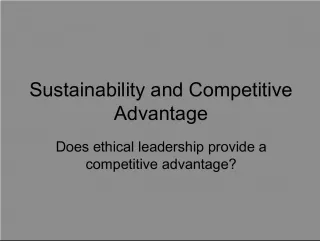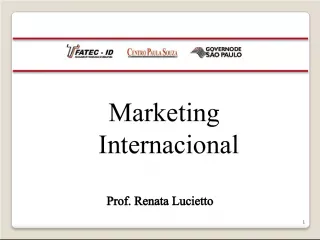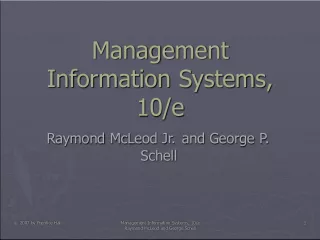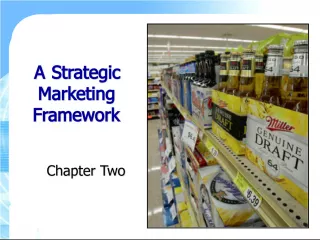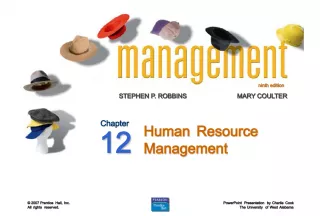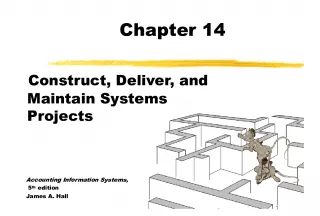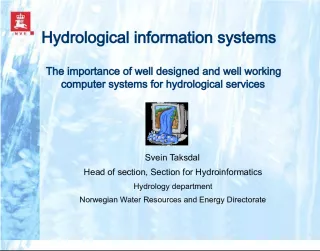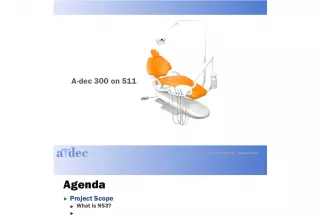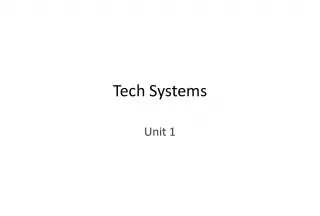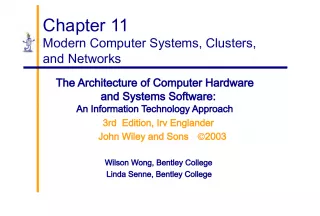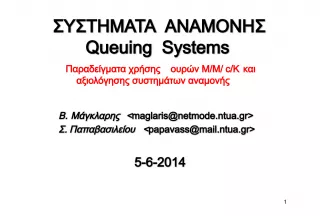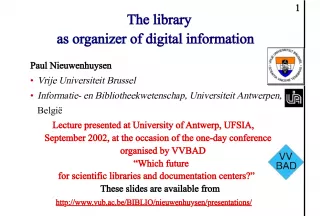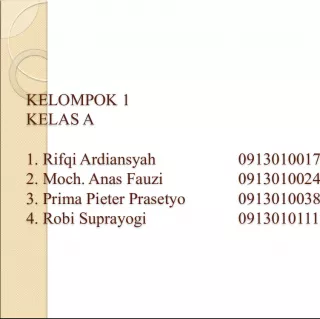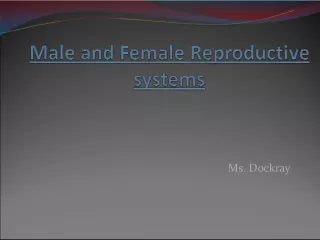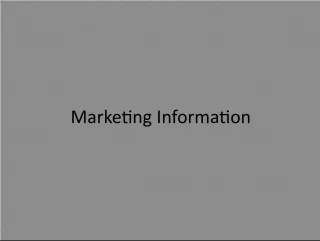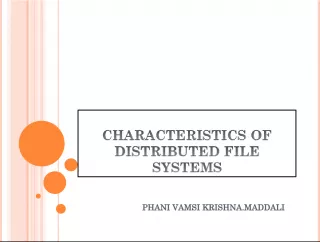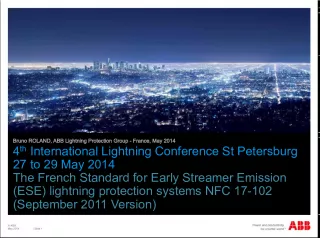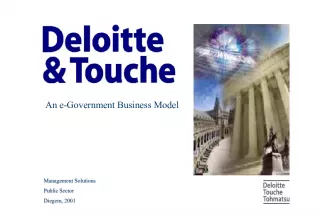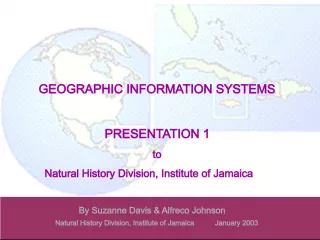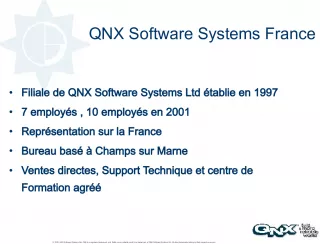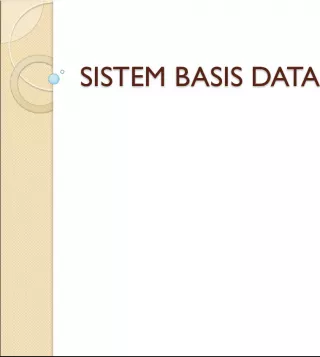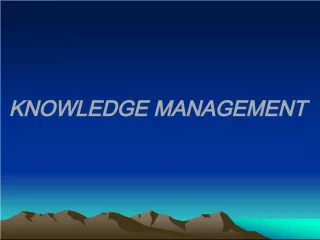Information Systems for Competitive Advantage
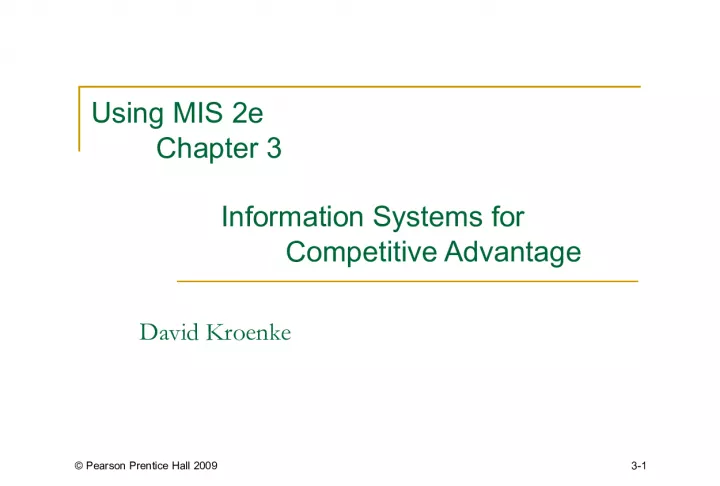

This chapter explores how organizational strategy and competitive strategy determine the structure of information systems. It covers the five forces that determine industry structure, the value chain, and how business processes generate value. It also examines how information systems can provide competitive advantages.
- Uploaded on | 2 Views
-
 akiraboyer
akiraboyer
About Information Systems for Competitive Advantage
PowerPoint presentation about 'Information Systems for Competitive Advantage'. This presentation describes the topic on This chapter explores how organizational strategy and competitive strategy determine the structure of information systems. It covers the five forces that determine industry structure, the value chain, and how business processes generate value. It also examines how information systems can provide competitive advantages.. The key topics included in this slideshow are information systems, competitive advantage, organizational strategy, competitive strategy, industry structure, value chain, business processes, value generation, IS structure,. Download this presentation absolutely free.
Presentation Transcript
1. Pearson Prentice Hall 2009 3-1 David Kroenke Using MIS 2e Chapter 3 Information Systems for Competitive Advantage
2. Pearson Prentice Hall 2009 3-2 Q2 What five forces determine industry structure? Q1 How does organizational strategy determine information systems structure? Q3 What is competitive strategy? Q4 What is a value chain? Q5 How do business processes generate value? Q6 How does competitive strategy determine business processes and the structure of information systems? Q7 How do information systems provide competitive advantages? Study Questions
3. Pearson Prentice Hall 2009 3-3 Q1 How does organizational strategy determine information systems structure? Q2 What five forces determine industry structure? Q3 What is competitive strategy? Q4 What is a value chain? Q5 How do business processes generate value? Q6 How does competitive strategy determine business processes and the structure of information systems? Q7 How do information systems provide competitive advantages?
4. Pearson Prentice Hall 2009 3-4 Q2 What Five Forces Determine Industry Structure? You can use Porters Five Forces Model to assess an industry structure based on these five questions: How much bargaining power do customers have? How much of a threat do substitution products or services pose? How much bargaining power do suppliers have? How great is the threat of new competitors entering the marketplace? How great is the rivalry among existing firms? The intensity of each force determines the characteristics of the industry, how profitable it is, and how sustainable that profitability will be. An organization develops its competitive strategy based on how it intends to respond to these forces.
5. Pearson Prentice Hall 2009 3-5 Fig 3-2 Porters Five Forces Model of Industry Structure Q2 What Five Forces Determine Industry Structure?
6. Pearson Prentice Hall 2009 3-6 Fig 3-3 Examples of Five Forces Q2 What Five Forces Determine Industry Structure?
7. Pearson Prentice Hall 2009 3-7 Q1 How does organizational strategy determine information systems structure? Q2 What five forces determine industry structure? Q3 What is competitive strategy? Q4 What is a value chain? Q5 How do business processes generate value? Q6 How does competitive strategy determine business processes and the structure of information systems? Q7 How do information systems provide competitive advantages?
8. Pearson Prentice Hall 2009 3-8 Q1 How does organizational strategy determine information systems structure? An organizations goals and objectives are determined by its competitive strategy. In turn, an organizations competitive strategy determines every information systems Structures Features Functions Fig 3-1 Organizational Strategy Determines Information Systems
9. Pearson Prentice Hall 2009 3-9 Q1 How does organizational strategy determine information systems structure? Q2 What five forces determine industry structure? Q3 What is competitive strategy? Q4 What is a value chain? Q5 How do business processes generate value? Q6 How does competitive strategy determine business processes and the structure of information systems? Q7 How do information systems provide competitive advantages?
10. Pearson Prentice Hall 2009 3-10 Q3 What is Competitive Strategy A company can choose one of four competitive strategies to help it respond to the structure of its industry. Be the cost leader across its industry Wal-Mart is the lowest cost leader in the retail industry. Differentiate its products from others across its industry Apple Computer competes on how much better its computers are than PCs. Be the cost leader in an industry segment Southwest Airlines is the cost leader in certain portions of the airline industry. Differentiate its product in an industry segment Apples iPhone competes by being different than other cell phones.
11. Pearson Prentice Hall 2009 3-11 Fig 3-4 Porters Four Competitive Strategies Q3 What is Competitive Strategy
12. Pearson Prentice Hall 2009 3-12 Q1 How does organizational strategy determine information systems structure? Q2 What five forces determine industry structure? Q3 What is competitive strategy? Q4 What is a value chain? Q5 How do business processes generate value? Q6 How does competitive strategy determine business processes and the structure of information systems? Q7 How do information systems provide competitive advantages?
13. Pearson Prentice Hall 2009 3-13 Q4 What is a Value Chain? Each competitive strategy requires a system whose benefits outweigh the risks and provide value to the customer. Value is defined as the amount of money a customer is willing to spend on a product, service, or resource. The difference between the value that an activity generates and the cost of the activity is the margin. A value chain is a network of value-creating activities and is divided into primary activities and support activities.
14. Pearson Prentice Hall 2009 3-14 Fig 3-5 Porters Value Chain Model Q4 What is a Value Chain?
15. Pearson Prentice Hall 2009 3-15 Primary Activities in the value chain include: Inbound logistics activities involve receiving and managing raw materials. Operations activities transform raw materials into final products or create services. Outbound logistic activities deliver finished products to customers. Marketing and Sales activities create marketing strategies and sell products or services to customers. Services activities provide after-sale customer support for products or services. Q4 What is a Value Chain?
16. Pearson Prentice Hall 2009 3-16 Support Activities in the value chain indirectly enhance production of products and services. Firm infrastructure includes general management, finance, accounting, legal, and government affairs (if necessary). Human Resources recruits, compensates, evaluates and trains employees. Technology Development includes research and development for new processes or techniques. Procurement finds suppliers and vendors for raw materials, creates contracts, and negotiates prices of raw materials. Q4 What is a Value Chain?
17. Pearson Prentice Hall 2009 3-17 Each activity in a value chain links to other activities in the value chain. Linkages are the interactions across the value activities. Understanding a companys linkages helps it succeed in designing or redesigning its business process. Rather than automating or improving existing functional systems, Porter contends companies should create new, more efficient business processes that integrate the activities of the entire value chain. Q4 What is a Value Chain?
18. Pearson Prentice Hall 2009 3-18 Q1 How does organizational strategy determine information systems structure? Q2 What five forces determine industry structure? Q3 What is competitive strategy? Q4 What is a value chain? Q5 How do business processes generate value? Q6 How does competitive strategy determine business processes and the structure of information systems? Q7 How do information systems provide competitive advantages?
19. Pearson Prentice Hall 2009 3-19 Q5 How Do Business Processes Generate Value? Each company has many business processes which are networks of activities that generate value by transforming inputs into outputs. You determine the cost of each business process by adding the cost of inputs plus the cost of activities used in the process. You determine the margin of each business process by subtracting the cost of the activity from the value of the output.
20. Pearson Prentice Hall 2009 3-20 Fig 3-7 Three Examples of Business Processes Q5 How Do Business Processes Generate Value?
21. Pearson Prentice Hall 2009 3-21 Each network of activity transforms input resources into output resources. Bicycle parts are transformed into a bicycle through a network of activities, both primary and support. A companys resources, like inventory parts, equipment, or cash, flow between or among all the activities used to produce a product. Facilities, like buildings or banks, store resources used in the companys network of activities. Q5 How Do Business Processes Generate Value?
22. Pearson Prentice Hall 2009 3-22 Q5 How Do Business Processes Generate Value? The key to a companys competitive advantage is to increase the margin of its products by adding value, reducing costs, or both. Business process redesign helps a business streamline its activities in order to increase its margins. The most difficult part of process redesign is associated with employee resistance.
23. Pearson Prentice Hall 2009 3-23 Q1 How does organizational strategy determine information systems structure? Q2 What five forces determine industry structure? Q3 What is competitive strategy? Q4 What is a value chain? Q5 How do business processes generate value? Q6 How does competitive strategy determine business processes and the structure of information systems? Q7 How do information systems provide competitive advantages?
24. Pearson Prentice Hall 2009 3-24 Each business must first analyze its industry and choose a competitive strategy. Will it be a low-cost provider or differentiate its products from competitors? Then it must design its business processes to span value-generating activities. Once those decisions have been made, a business can structure an information system that supports its business processes. Q6 How Does Competitive Strategy Determine Business Processes and Structure of Information Systems?
25. Pearson Prentice Hall 2009 3-25 Q1 How does organizational strategy determine information systems structure? Q2 What five forces determine industry structure? Q3 What is competitive strategy? Q4 What is a value chain? Q5 How do business processes generate value? Q6 How does competitive strategy determine business processes and the structure of information systems? Q7 How do information systems provide competitive advantages?
26. Pearson Prentice Hall 2009 3-26 Q7 How Do Information Systems Provide Competitive Advantages? There are two ways businesses can respond to the five competitive forces. They can gain a competitive advantage via their products and services. They can gain a competitive advantage by developing superior business processes.
27. Pearson Prentice Hall 2009 3-27 A business can gain a competitive advantage via its products by Creating new products and services, or Enhancing its existing products or services, or Differentiating its products and services from its competitors Information systems can help create a competitive advantage by being part of the product or by providing support to the product. Q7 How Do Information Systems Provide Competitive Advantages?
28. Pearson Prentice Hall 2009 3-28 A company can gain a competitive advantage by using business processes to Lock in customers via high switching costs, making it too expensive for the customer to switch to a competitor. Lock in suppliers via easy-to-use connections, discouraging them from changing to another business. Create entry barriers for new competitors, thereby raising the costs to enter the market. Establish alliances with other organizations and set standards, reducing purchase costs and providing benefits for everyone. Reduce costs which in turn reduces prices and increases profitability. Q7 How Do Information Systems Provide Competitive Advantages?
